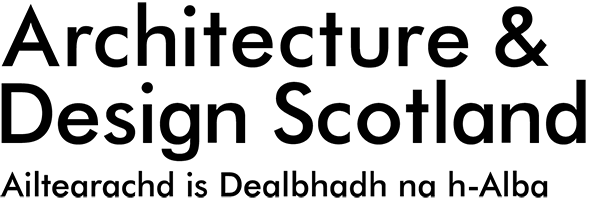Place Standard for communities in action
Informing and empowering communities undertaking place-based projects.
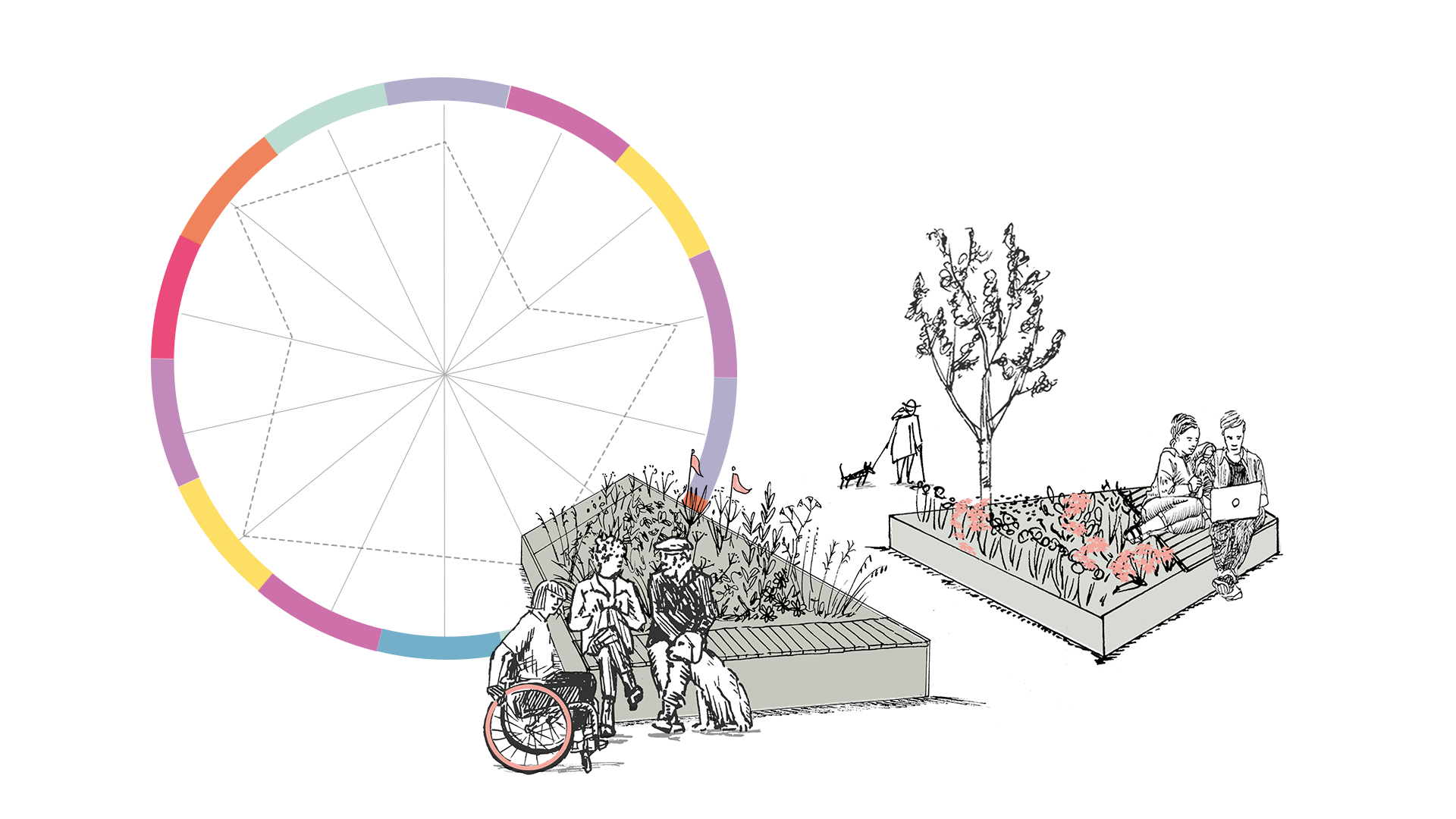
Enabling community councils and local residents to work together to plan, design, and create places across Scotland is something we need to consider. The Place Standard tool can help to gain their perspective and include a wide range of voices in the decision-making process.
The Place Standard provides local councils and communities with a simple framework. It enables exploration and provide a better understanding of places by considering the physical and social environments of a place.
How is the tool relevant?
-
Offers voice and influence
-
Establishes community brief for local improvement
-
Provides baseline evidence for funding bids
-
Provides a catalyst of change for community organisations (e.g., Development Trust or Community Council)
How can the tool help resolve current issues for place-based work?
-
Community place plans
-
Lobbying for improvement
-
Funding bids
-
Design charettes
Real-life examples of the Place Standard tool in action
We've collected a series of case studies that provides evidence of how the Place Standard tool can benefit local communities in Scotland. These case studies are a recollection of stories from local authorities and communities’ point-of-view of using the Place Standard tool.
Click on the links to scroll to the selected case study.
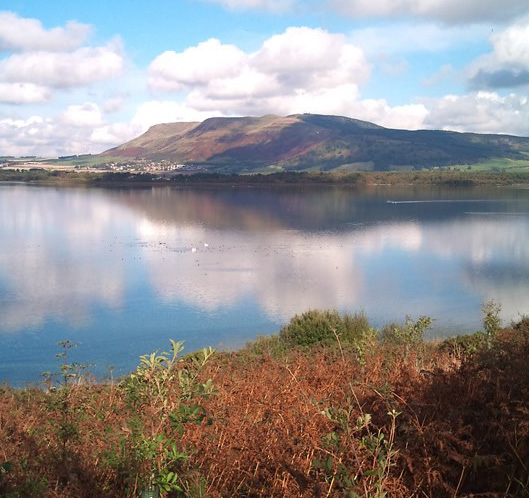
Portmoak Parish community priorities
The parish of Portmoak extends for five miles along both the eastern and southern banks of Loch Leven. The 1,400 or so residents live mainly in the principal settlements of Kinnesswood, Scotlandwell, Wester Balgedie and Glenlomond.
Here, members of Portmoak Community Council (PCC) reflect on how they used the Place Standard tool in 2016 to guide their priorities.
Image credit: Portmoak Community Council
In autumn 2016, we wished to review and clarify our priorities as a community council for the years ahead. With the advice and support of officers at Perth and Kinross Council (PKC), we decided to use the Place Standard tool for this.
A proactive approach
We felt this could guide a proactive rather than simply a reactive approach to supporting the community. We also wanted to ensure this reflected a wider range of the population than those usually engaged via meetings or correspondence.
Use by councillors
PCC councillors formally agreed to try the tool and completed it themselves at a meeting, achieving a consensus for each item.
Community participation
Between October 2016 to January 2017, a delegated councillor contacted representatives from a range of community groups to participate in the exercise. Also participating were a large Brownie pack and one individual.
The delegated councillor explained the process to each group. Some completed the tool as a group and others asked one member to complete it on their behalf. The pupil council used it over a few sessions, facilitated by a school staff member (resident outside the parish).
Results that demonstrate council initiatives
The resulting responses represented a spectrum of ages and interests, though tended to exclude business interests. There was a high rate of consistency for several items such as:
- moving around
- natural spaces
- play and recreation
- identity and belonging
- feeling safe
- care and maintenance
- influence and sense of control
There were also a greater range for others such as:
- public transport
- traffic and parking
- streets and spaces
- facilities and amenities
- work and local economy
- housing and community
- social interaction
The two most highly rated factors were natural spaces and feeling safe. The two lowest rated were public transport, and traffic and parking.
This endorsed some of the work PCC tended to spend a fair bit of time on, helping councillors to appreciate that most residents were pleased with many aspects of local life.
The consultation exercise using the tool certainly gave us a clearer view of what matters most to people in our community. Where we may look for improvement and conversely what is successful and appreciated.
Addressing parking and public transport
We used the outcomes to guide priorities in our dealings with the local authority. For example, we worked on trying to address parking in several ways and tried to explore solutions for public transport with PKC.
Improving focus for community improvements
However, despite plenty of effort and time subsequently spent by the PCC, many of the matters raised remain unresolved—largely because we as a Community Council do not have the power to change them.
Nevertheless, we found the experience productive and well worth the effort. The tool is not perfect, but it does allow us as a community council to focus our efforts better.
“The local groups who participated liked the format of the diagram and generally found the tool very straightforward to use. It offered the real opportunity to obtain input from the young and very young, and from other parts of the community that seldom comment on local matters.”
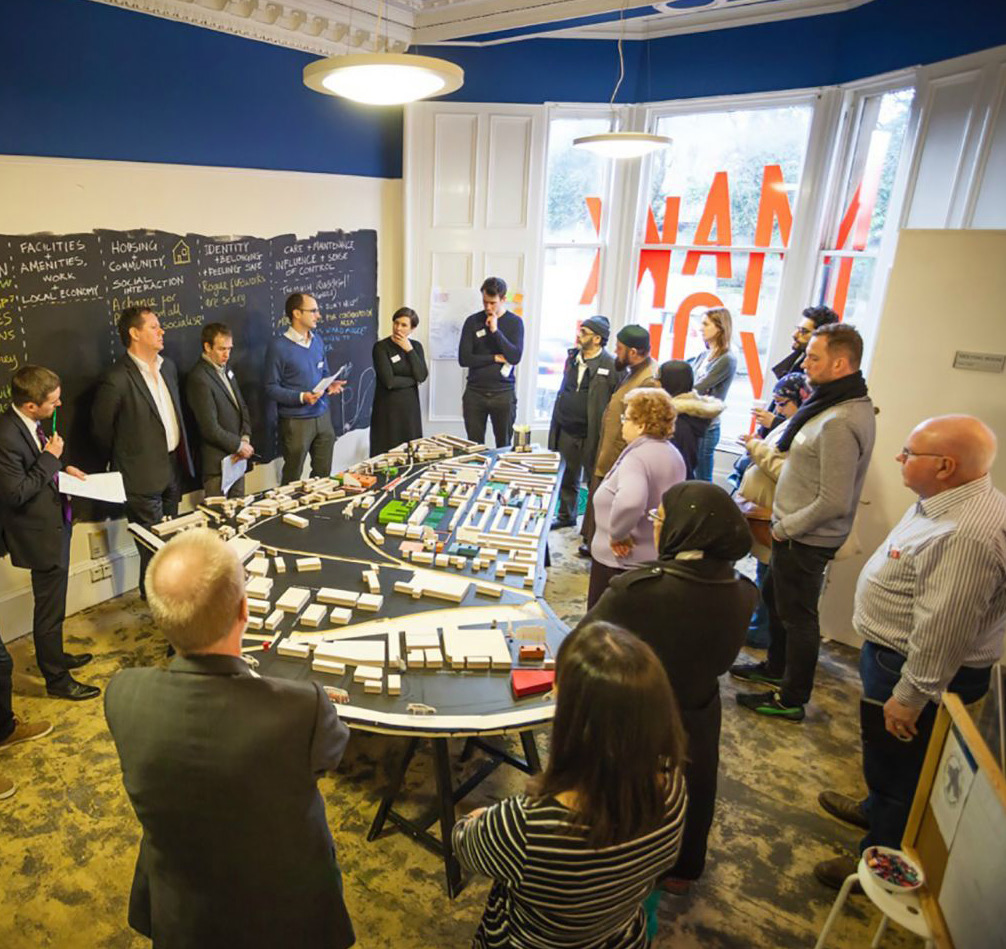
East Pollockshields regeneration design charette
Pollokshields Community Council commissioned Collective Architecture and Dress for the Weather at the end of 2015 to lead a design charrette for East Pollokshields. They were looking to engage the community in identifying key areas for long-term improvement.
Architect Jude Barber explains how Place Standard helped the conversation.
Image credit: Ross Campbell
Make your mark project
The main aim of the project was to complete the East Pollokshields and Port Eglinton Planning Study as a masterplan document. As supplementary planning guidance to the new city development plan, it would help inform the next two decades of development in this multicultural area.
Design charette
The Place Standard tool formed an integral part of the wider charrette process. It was used to structure and facilitate engagement in a holistic and clear way and highlight positive aspects of living and working in the area.
We used the Place Standard tool in a week-long charette process in a range of different settings, which ran in February 2016. Local residents could participate and contribute regardless of how much time they could spare.
Local residents as 'Charette Champions'
Several active local residents signed up as Charrette Champions, to support the process alongside the community council and the consultant team. These Champions represented a cross-section of the local community and were able to encourage participants into the project thanks to their local links.
Mobile charette consultations
The week began with informal, on-street ‘mobile charette’ consultations, which saw the project team go out onto the streets of East Pollokshields and Port Eglington with plans and models.
This mobile charrette used a simple, one-page version of the Place Standard compass diagram with a small comments section to obtain thoughts from passers-by on the street.
Four half day workshops at ‘Charette HQ’
Following the mobile charette consultation was a series of four focused group discussion workshops structured around the Place Standard topics. The setting was a specially arranged Charrette HQ on Shields Road with a welcoming atmosphere with a:
- workshop space
- presentation area and a large-scale model
- social spaces with hot drinks
Each of the four half-day workshops covered three to four of the Place Standard themes. Everything was covered over the two days and participants who took part in all four sessions had a completed questionnaire by the end of the process.
Translating the questionnaire into Urdu
Key headings and questions were also translated into Urdu. These were displayed in the main workshop and handed out at events. Discussions around them were facilitated by the project’s Urdu-speaking engagement team member.
Presentations
The consultant team was on hand, with each specialism giving a presentation at the start of every workshop. These presentations were designed to:
- provide a framework of constraints and topics for the conversation
- inspire discussion
- give a deeper understanding of the local context
Following the presentations, we divided the attendees into groups of between five and ten people, with the consultants chairing each discussion.
Role of Charette Champions
The Charrette Champions helped to keep discussions on topic as well as take notes. The workshops revolved around maps of the area with notetaking and sketching overlaid.
Discussion was prompted by the Place Standard questions, which ensured consistent themes across all engagement and provide participants with an opportunity express specific concern.
Using the Place Standard app
All completed forms were transferred digitally using the Place Standard app and assessed together relative to location and key themes, and feedback. The data was collated into a report and distributed to all key stakeholders for review.
The outcomes were distilled into a five-point plan for the area and a schedule of activities for the short, medium and long term.
Discussing and sharing ideas
To conclude each workshop, the groups would gather around the large city model and present their discussion to fellow participants.
Groups were then encouraged to ‘draw up’ their findings and leave a record of their discussion over the maps and model.
A five-point vision
Through the Make Your Mark charrette process, the local community informed and developed a clear and concise five-point vision that addressed existing challenges, proposed viable solutions and set out a positive future for the area.
It seeks to build on existing infrastructure and to better support the local community in shaping and influencing the development of East Pollokshields.
A community action plan
The process also helped to shape and develop a realistic and deliverable community action plan – a series of short, medium and long-term actions through which the five-point vision could be achieved in a dynamic, phased manner.
Revealing results to the public and Scottish Government
The five-point vision and resultant actions were presented at a public meeting on 20 March 2016 and were well received. They were presented to residents, stakeholders and locally elected representatives, including Scotland’s First Minister Nicola Sturgeon.
Community Trust
The process led to formation of a Community Trust which has been active since and is taking forward the aims and objectives identified in the study. A Community Engagement Officer is now in place on a part-time basis.
The trust has also arranged a three-year lease with an existing landowner to allow access and use of a disused bowling site. Plans and ideas for how this might be used by the local community are currently being developed.
“The Place Standard was introduced to give consistency and clarity to an intensive and varied process, but also because it allows flexibility in how people can engage with the tool.”
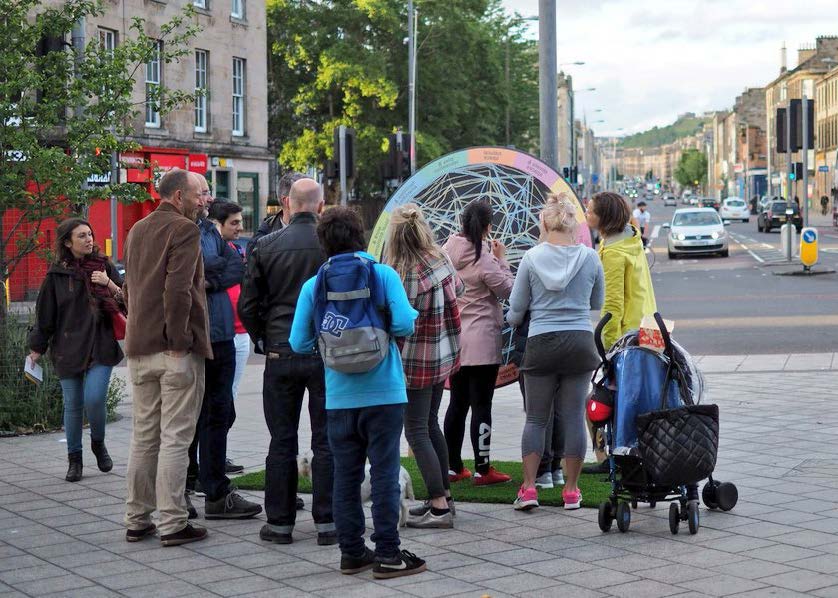
Leith Docks development framework design charette
Leith Creative, Here + Now, Biomorphis and Lateral North used the tool to help inform the ‘People and Places Make Leith Better’ project. There were around 400 respondents at six events and a total of 3000 participants were involved in the wider programme.
Duncan Bremner, a citizen curator reflects on how the team used the tool to get more people involved in the decision-making process.
Image credit: Leith Creative
As part of the ‘People and Places Make Leith Better’ project, we used the tool to involve and empower those not usually considered in planning or decision-making processes.
On-street engagement and public spaces
We carried out on-street engagement using a giant version of the Place Standard tool. The Place Standard wheel allowed us to create an event that everyone living or working in Leith could join in with and understand.
Working with partners the original compass was converted into a large movable rotating chalkboard.
The wheel was taken out into the community, appearing in a variety of public spaces and at street corners. It was used first near St Margaret’s House and in the wider Leith area prior to a design charrette at St Margaret’s House.
Drawing out a variety of perspectives
Assessments were predominately made by groups attracted to the wheel and supported by a facilitator.
Each individual we spoke with had the opportunity to discuss their perspective and to record their own views using coloured chalk. Photographs were taken as the wheel grew. This enabled researchers to then map an average for each session.
This early work with the tool provided the foundations for the activities at St Margaret’s House where the Place Standard wheel was the main fixture. The wheel also supported another design charrette event in Leith, used alongside a Local Heritage Listings project.
The Place Standard wheel scores were documented and presented alongside qualitative data gathered through the conversations generated around the wheel.
The project concluded in a two-day community conference where the wheel formed an integral part of sharing findings from the several charrettes and events.
Outputs were reported formally to the council, the community council—presented in a document called the Leith Creative Blueprint and shared at a series of public reporting events.
The research has also fed into the ongoing development of the council’s Northeast Locality improvement plan and the updated Leith Docks development framework. Design for physical change will form the next phase of work.
“By going out into the community and asking for opinions the process empowered local people to express their feelings in a very direct way. We found that respondents were frequently from groups that might be considered as hard to reach.”
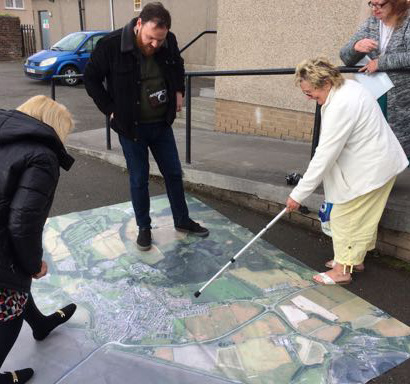
Kincardine regeneration design charrette
Gary Porter of The Coalfields Regeneration Trust and design consultant Oliver Chapman share their experiences of using the Place Standard as part of a design charrette for the town of Kincardine on the Firth of Forth.
Image credit: Fife Council
We used the Place Standard as part of a wider charrette process in June 2017. The aim of the charrette, called ‘Go Forth! Kincardine’, was to appraise Kincardine in its current state and help identify opportunities for co-ordinated action. This was to benefit the local community and make Kincardine an even better place.
We felt the Place Standard tool was a natural fit to assist us in gauging the community’s thoughts in a simple and tangible way.
With the tool, we focused on five target areas in Kincardine identified from the pre-charrette engagement work and from existing knowledge. These areas were of similar scale but varied in character:
- The historic village centre/marketplace
- An awkward road junction
- The high street where the supermarket was scheduled to close
- The waterfront facing the River Forth that is hard to access
The tool facilitated our engagement work with the community and helped us to tease out local perceptions of the target areas.
Tapping into experiences
We discussed the use of the tool with key stakeholders at pre-event planning and briefing meetings. These included colleagues on the charette delivery team who have experience of using it in previous charette work.
This formed part of the full charrette programme, which was widely promoted within the community via flyers, email, social media, and national press coverage.
Various pre-engagement events included:
- a creative workshop with pupils from the local primary and high schools walking around town with the big map
- several stakeholder meetings with members of local organisations
Workshops
Following on from the pre-charrette activities, the main charrette event was held at Kincardine Community Centre over a concentrated four-day period in June 2017.
Each workshop built on the discussions of the day before to enable a thorough investigation and analysis of the key issues, gathering a full range of ideas and suggestions.
Evening drop-ins complemented the daytime workshops and opened the charrette event to as wide a sample of the local contingent as possible. The workshops and drop-in sessions were well-attended, with over 200 participants across the four-day period.
Walking around key areas
Using the Place Standard tool on the first day, participants examined the four target areas on investigative group walks. It was each led by a member of the engagement team with a background discipline that best suited the anticipated discussion points.
Pairs of participants shared clipboards and small groups of teams focused on each target area. Participants walked around the areas and completed paper versions of the tool as they went.
After walking through key areas, participants then took part in group discussions. These discussions provided an opportunity for participants to share their findings and observations and come to a consensus on their area’s score for each of the Place Standard categories.
Each group had an anchor member from the engagement team. Individuals from other area groups were encouraged to drop in and give their opinions to build up a holistic picture.
Analysing data
Data from the Place Standard assessment was analysed and drawn as layers on blank, large format prints of the Place Standard compass diagram.
These were reviewed with the community at a charrette plenary session for group agreement that the outcomes reflected the general consensus. It was then digitised and included in the final charrette report with analysis.
A holistic vision of Kincardine
The key observations and issues that arose during the Place Standard exercise are now clearly prioritised in the charrette report and organised into four underlying themes:
- Connectivity
- Heritage and identity
- Enterprise
- Health and wellbeing
This has formed the basis for a ‘big picture’ holistic vision for the future of Kincardine, and a more detailed action plan which identifies short, medium and long-term actions.
Further discussions and emerging areas for action
The data that emerged from the charrette opened discussions with Scottish Power (about derelict land use), Co-op supermarket (which is moving out of the town centre) and spurred action for improved access to local Forestry Commission woodland and more.
The process helped focus a fledgling Development Trust and led to the creation of a community anchor group, ‘Go Forth Kincardine’. The group aims to lead on and deliver the plans, projects and proposals set out in the community plan.
In addition, the wider influence of the work is shaping social and spatial policy in Fife.
“We found that having the Place Standard tool as part of a wider consultation was useful. As a stand-alone exercise, this allowed us to make sure the findings were included and tangible to the other research and work completed.”
Empower your communities to get involved in place-based projects
We have experience in helping local authorities and community councils involve local residents in Place Standard workshops. If you need a hand in planning out this process or require resources and further case studies, get in touch today.
